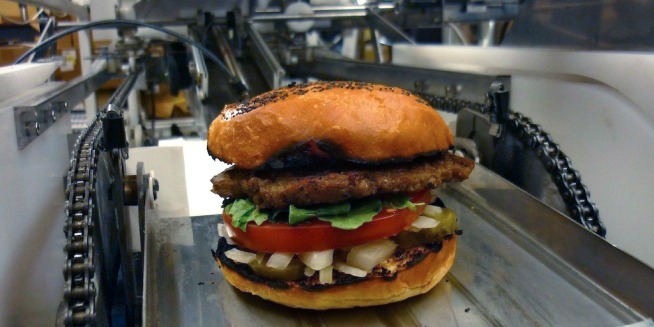American startup Zume presents its innovative machine capable of baking 288 pizzas per hour, and from 2017 it will manage the entire preparation phase
Excuse me, there's a robot on my pizza. In Naples, they're already on the warpath, but the innovation is one to keep an eye on in the restaurant industry. Silicon Valley-based startup Zume, which offers its services in Mountain View, has unveiled Bruno, the pizza maker's robot friend.
A Robot in the Kitchen
Bruno's job isn't very creative, but he's never complained so far. From 10 a.m. to 11 p.m., thanks to his mechanical arm, Bruno picks up the topped pizzas and puts them in the oven. Never a mistake, never a cigarette break and not even a delay. Bruno is a model employee. Someone will already have a phobia: now even robots are stealing our jobs? Tranquilli, Julia Collins, co-fondatrice e co-Ceo di Zume Pizza, assicura che questo tipo d’innovazione non toglierà posti di lavoro a noi semplici umani. Anzi, la finalità è semplificare il lavoro dei colleghi meno “stakanovisti” di Bruno.
Piena automazione
Il problema è che in casa Zume garantiscono qualcosa ma in senso tecnologico vanno verso un’altra direzione. Bruno per ora, infatti, inforna e sforna solamente le pizze. Il solamente è eufemistico visto che può farlo 288 volte in un’ora. La start-up, in collaborazione con ABB Robotics, vuole ulteriormente migliorare il macchinario per renderlo capace di stendere i panetti e condirli. Quando questo accadrà, loro sperano nei primi mesi del 2017, i pizzaioli verranno reinseriti in nuovi compiti.
Fast food 2.0
 Fonte foto: Web
Fonte foto: Web
Momentum Machines
Bruno non è il primo caso di robot interno alle cucine dei ristoranti statunitensi. E l’utilizzo di questi macchinari, precisi e veloci, si sta espandendo sempre più nel settore dell’industria dei fast-food. Già dal 2012 un robot di Momentum Machines fu chiamato in causa per affettare, grigliare e assemblare gli hamburger. Nel 2015 una catena di cibo vegetariano a San Francisco si dotò di una tecnologia all’avanguardia nella prenotazione dei piatti, diminuendo code o errori. Ora è vero che tutte queste aziende hanno garantito che le loro innovazioni porteranno posti di lavoro invece che toglierli. But it's also true that the hires they guarantee are mainly in technical support and web design. Not exactly the core competency of a pizza maker. It should also be considered that in the U.S. labor market alone, there are over 3.7 million workers in fast-food chains. Most of them are young and with a basic formal education.
What about pizza carriers?
Do you remember the kids on old scooters who used to ride around half the city in one night to deliver pizzas? Well, they still exist in Italy while in Silicon Valley they are going to be a distant memory. Zume, in fact, in addition to Bruno and his "colleagues" robots, capable of taking orders in a perfect way, is thinking about a last generation van for pizza delivery. No delays and no deliveries of cold products. The pizza, in fact, will be cooked directly during delivery. The company counts in this way to reduce the time needed to complete an order to only five minutes. The delivery is the key point for the company that hopes to take advantage of the competition, on all of Domino's Pizza and Pizza Hut, just on the timing.
